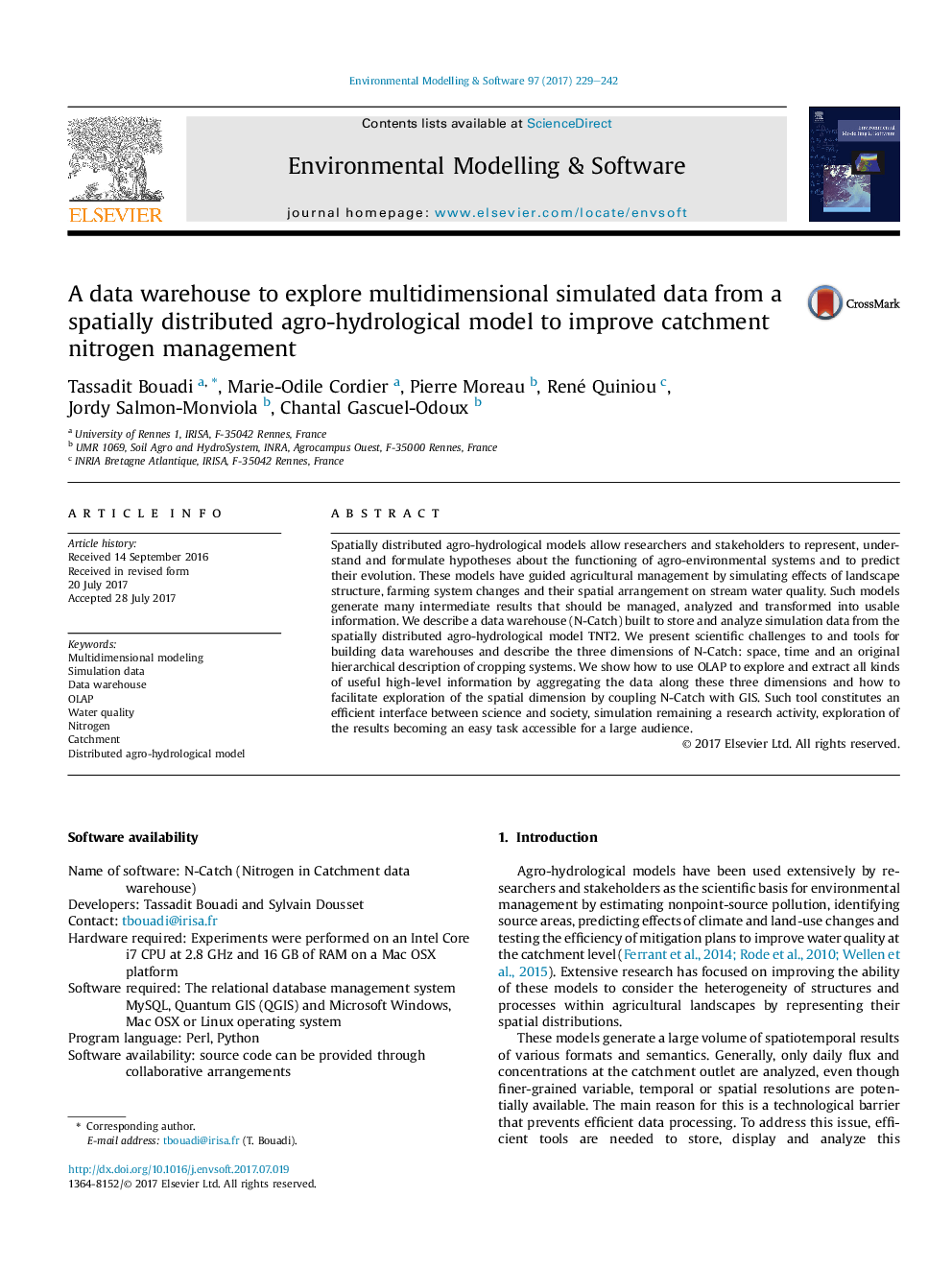| Article ID | Journal | Published Year | Pages | File Type |
|---|---|---|---|---|
| 4978062 | Environmental Modelling & Software | 2017 | 14 Pages |
Abstract
Spatially distributed agro-hydrological models allow researchers and stakeholders to represent, understand and formulate hypotheses about the functioning of agro-environmental systems and to predict their evolution. These models have guided agricultural management by simulating effects of landscape structure, farming system changes and their spatial arrangement on stream water quality. Such models generate many intermediate results that should be managed, analyzed and transformed into usable information. We describe a data warehouse (N-Catch) built to store and analyze simulation data from the spatially distributed agro-hydrological model TNT2. We present scientific challenges to and tools for building data warehouses and describe the three dimensions of N-Catch: space, time and an original hierarchical description of cropping systems. We show how to use OLAP to explore and extract all kinds of useful high-level information by aggregating the data along these three dimensions and how to facilitate exploration of the spatial dimension by coupling N-Catch with GIS. Such tool constitutes an efficient interface between science and society, simulation remaining a research activity, exploration of the results becoming an easy task accessible for a large audience.
Related Topics
Physical Sciences and Engineering
Computer Science
Software
Authors
Tassadit Bouadi, Marie-Odile Cordier, Pierre Moreau, René Quiniou, Jordy Salmon-Monviola, Chantal Gascuel-Odoux,
